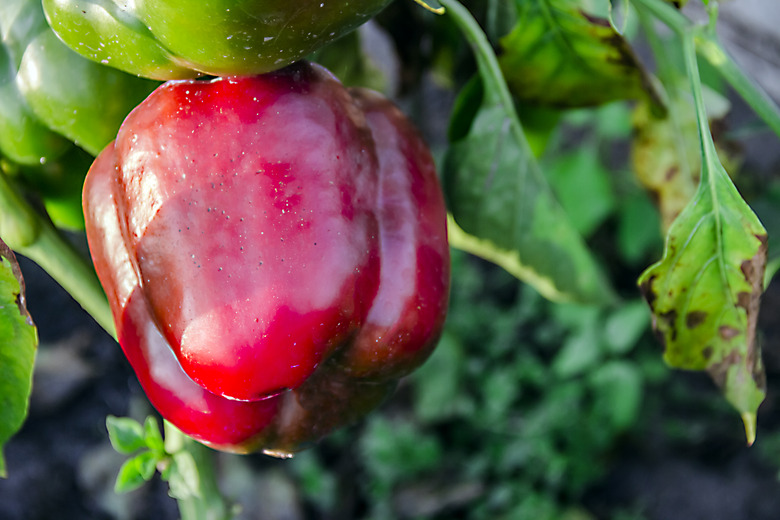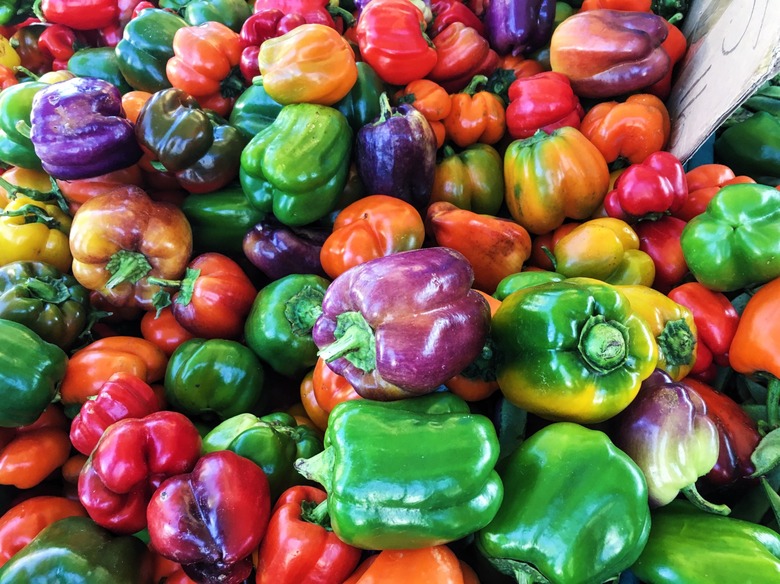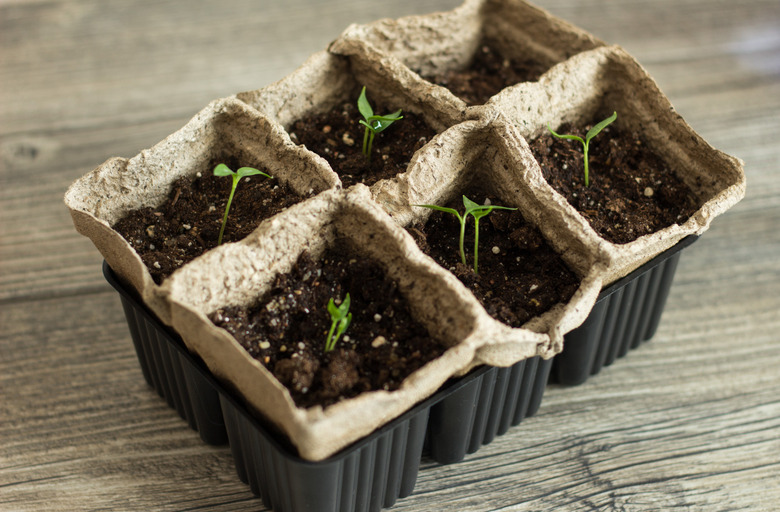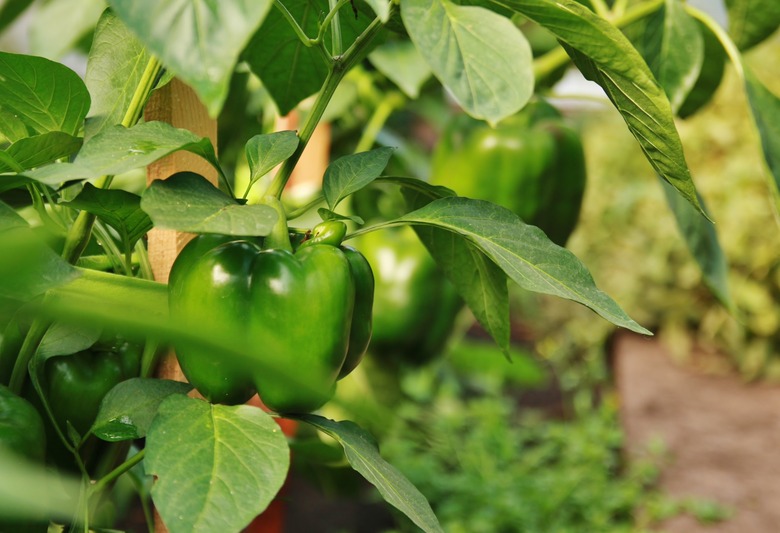How To Grow Peppers In Containers
We at Hunker love a diverse vegetable, and peppers are right up there with the best. Talk about a variety: hot peppers, sweet peppers, round or elongated, yellow, orange, green, and red peppers. Need we say more? These vibrant plants are extremely popular as container veggies, so beginner gardeners: Don't be scared. Your patio or balcony will benefit from these beauties and you'll feel like a gardening pro when you follow these tips below.
Picking Your Pepper(s)
Picking Your Pepper(s)
Know this before you get started: Some species of pepper plants shoot up too high and spread too far to grow well in pots. Unless you are ready to invest a lot of space for big containers and serious supports, opt for shorter, compact varieties. If you want sweet pepper plants, try Camelot, Juniper, and Redskin peppers (they're on the small side but delicious). Plant Italico for elongated Italian peppers, Super Chile for chile peppers, and Orange-Thai for bright orange, Thai-style hot peppers. Yellow Mushroom is a compact plant producing gorgeous and extremely hot yellow peppers. Any of these can be grown in an 14 to 18 inch pot without trellising.
Growing Peppers From Seed
Growing Peppers From Seed
Starting your pepper plants from seed is more of a project, but you'll profit from a greater selection of compact plants. Use small pots that can later be planted directly in the ground. In late winter, fill the pots with dampened potting soil and press the seeds in slightly. Check the package directions for the preferred depth. Place the pots in a warm area with lots of light. Keep the soil damp and watch for the seedlings to emerge. When they do, turn the pots regularly so that each side is exposed to light.
When the seedlings reach 3 or 4 inches, start the hardening off process. This means you should take your plants outside for one or two hours one afternoon, then bring them back in. Gradually increase the outdoor time. After a week or two, they will be ready for transplanting.
Transplanting Seedlings or Plants
Transplanting Seedlings or Plants
You can short circuit the seeding requirements by buying little transplants from the garden store. Whether you use homegrown seedlings or transplants, the process for getting them into the patio containers is the same. Wait until the temperatures at night stay above 50 degrees Fahrenheit and all danger of frost is over.
Use pots between 12 and 18 inches in diameter, taking a cue from the mature size of the plants. Any kind of pot you will work fine as it has lots of drainage holes. Cut a piece of window screen material to place on the bottom of the pot, then fill up the container to several inches below the lip with organically rich, loose, well-draining potting soil.
Prepare planting holes the size of your plant pot. If your seedling is grown in a pot that can be planted, sink the entire little pot into the hole. If not, use enormous care to remove the plant from its plastic pot with roots undamaged. Generally you want to plant at the same depth as the young plants experienced in their first pot. Gently press the soil to fill in around the plant, and then water well. If your type of pepper requires support, attach a trellis or cage at this early stage to avoid breaking the brittle pepper branches later.
Caring for Your Pepper Plant
Caring for Your Pepper Plant
Like so many garden vegetable plants, peppers require a sunny location. Choose a spot for your plants that gets at least six hours a day of direct sun. Keep your eye on sunlight as the season develops since a site in sun in May could end up in shade by July. Carefully move the containers to keep up the sun.
Your container pepper plants require water and food just like garden plants do. In fact, potted veggies may need more irrigation and fertilizer. As far as water goes, the rule is simple to state but requires constant vigilance: never allow the soil to dry out but don't let the plants sit in water either. Dig down to an inch or so and see whether your plant's soil is moist. If you let it dry out completely on a hot day, you may not have any peppers to harvest.
What about fertilizer? Gardeners use different methods of getting their pepper plants the nutrients they require. Some advocate waiting until the blooms set fruit, then applying time-release granular fertilizer on the soil, not touching the plant. Others suggest using a balanced water-soluble fertilizer every week starting two weeks after planting. If you opt for this method, change to a high potassium fertilizer (most tomato-specific fertilizers work well) after the peppers flower. After about 10 weeks, add more timed-release granular fertilizer.



